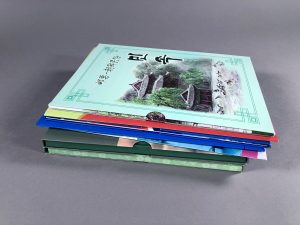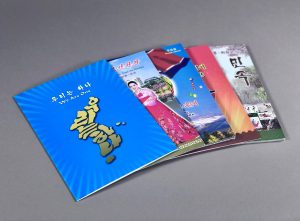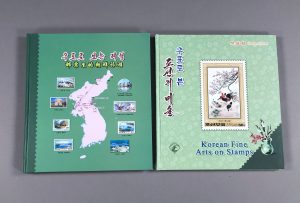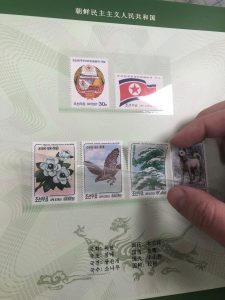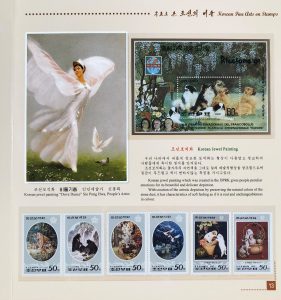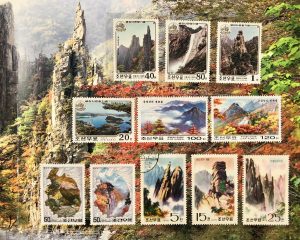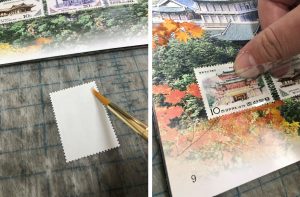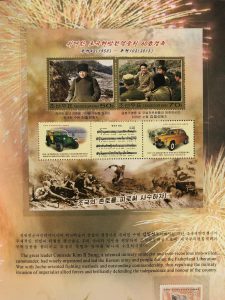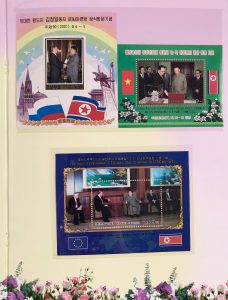by Erin Hammeke, Senior Conservator
Duke University Libraries recently hosted an Islamic Bookbinding workshop with instructor Yasmeen Khan, head of Paper Conservation at the Library of Congress. Staff from Preservation at UNC libraries; Duke Conservation Services; and former HBCU library conservation alliance intern, Layla Huff, attended the workshop. During the course of the week, we learned how to construct a Persian bookbinding model that illustrates many of the structural, material, and decorative features of Islamic bookmaking. The models have hand-sewn textblocks, woven silk endbands, gold-sprinkled endleaves, an envelope flap, and goatskin leather covers decorated with a traditional brass stamp. Students personalized their bindings with additional decorative elements like ruled and gold tooled lines, gold paint, and colored leather onlays. We also discussed conservation considerations for Islamic materials with Yasmeen and examined Islamic bookbindings from the Rubenstein Library Collections.
The workshop was generously funded by the TRLN Library Consortium’s IDEA funds. Big thanks to TRLN and to Yasmeen for making this workshop possible!
 Considering the great expanse of the Islamic world, there is much variation in bookbinding features associated with diverse cultural traditions and geographic origins. We got the chance to examine and compare Duke’s holdings of rare Islamic manuscripts.
Considering the great expanse of the Islamic world, there is much variation in bookbinding features associated with diverse cultural traditions and geographic origins. We got the chance to examine and compare Duke’s holdings of rare Islamic manuscripts.
 The Rubenstein Library holds Persian items (from India and Iran), Moroccan, Ethiopian, Turkish, and Chinese Uygur bookbinding holdings, as well as others whose geographic origins have not yet been identified. While the Islamic calligraphic manuscript tradition was paramount, the decorative features of bookbindings are also often quite glorious – from intricately painted lacquer bindings to stenciled or cut paper endsheets – these features can give clues about where an item originated and also to whom the bookbinding may have been marketed in the modern book trade.
The Rubenstein Library holds Persian items (from India and Iran), Moroccan, Ethiopian, Turkish, and Chinese Uygur bookbinding holdings, as well as others whose geographic origins have not yet been identified. While the Islamic calligraphic manuscript tradition was paramount, the decorative features of bookbindings are also often quite glorious – from intricately painted lacquer bindings to stenciled or cut paper endsheets – these features can give clues about where an item originated and also to whom the bookbinding may have been marketed in the modern book trade.
Arabic Manuscript 020 has the more squarish format typical of Maghrebi bindings from Morocco.
Arabic Manuscript 048, a Chinese Uygur Qur’an, has endleaves decorated with colorful paper cut outs and a decoratively cut envelope flap.
 Hosting this workshop reminded us of how important it is to have opportunities to expand our knowledge bases and also to convene with our regional colleagues for much-needed training. With a topic this large, many of us learned how little we knew and how much more there is to learn. It was a good reminder that of how important it is to advocate and care for all materials and it’s easier to do this when one is better informed about the history and unique features of such collections.
Hosting this workshop reminded us of how important it is to have opportunities to expand our knowledge bases and also to convene with our regional colleagues for much-needed training. With a topic this large, many of us learned how little we knew and how much more there is to learn. It was a good reminder that of how important it is to advocate and care for all materials and it’s easier to do this when one is better informed about the history and unique features of such collections.












